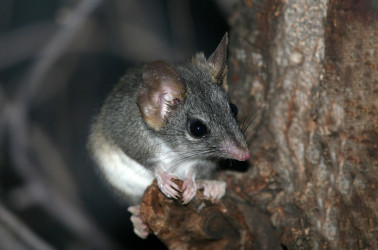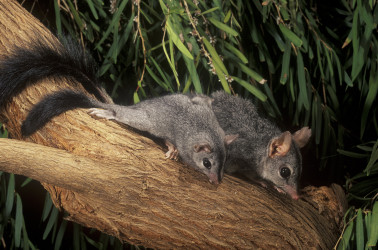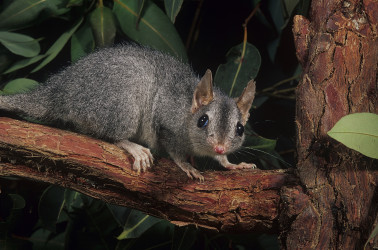The Red-tailed Phascogale is a small carnivorous marsupial, measuring around 10cm long and weighing only 60g. It is one of the three members of the phascogale genus. It has sadly disappeared from much of its historic range across Australia.
Improving success of predator reintroductions Red-Tailed Phascogale Research
Support of PhD Candidate, Tessa Manning
The Project
There have been six reintroduction attempts across Australia for the Red-tailed Phascogale in the last 15 years. One of these failed, and two others show little recapture success.
In conjunction with FAME’s groundbreaking partnership with the South Australian Department for Environment and Water (DEW) and SA Arid Lands Landscape Board (SAAL), PhD Candidate Tessa Manning will undertake an in-depth, multiyear study of released populations to improve our ability to successfully reintroduce the species to areas in which it has gone locally extinct.
Why we need to act
The Kenngoor, or Red-Tailed Phascogale (Phascogale calura), is a small, carnivorous marsupial closely related to quolls and dunnarts. Unlike their cousins, however, they are arboreal – primarily tree-dwelling – and therefore fill a critical niche in the ecosystems they inhabit.
Sadly, they have disappeared from close to their entire range, leaving a void in this important predatory role.

Threats to the species
The Red-tailed Phascogale has particularly suffered since the introduction of cats and foxes, and ongoing habitat destruction.

Solution and approach
Using radio-tracking collars, a number of aspects of the phascogale’s behaviour will be assessed across both release sites: Vulkathunha-Gammon Ranges National Park, and Secret Rocks. In the former, this will be done with the assistance of DEW employees, whilst Ecological Horizons staff will aid Tessa’s study in the southern site.
Focal observations will be undertaken during the day, and Tessa will track the animals at night to conduct nocturnal observations using thermal imaging equipment.
By studying the diet of Red-Tailed Phascogales, what factors influence their breeding success, and holistic records of behaviour in the wild, Tessa hopes to reveal the species’ vulnerabilities upon release, and the ways in which we can better support these introductions.
This will be the first molecular diet study for the Kenngoor, making it the most informative study to date, and this may also influence food items for captive populations.
Camera trap footage and scat and tissue samples will all play a role in further data collection, as Tessa works to compile and analyse data before submitting her final research piece.
As well as providing a wealth of information not currently available on this important, endangered species, Tessa’s PhD research aims to provide the following:
|
FAME are proud to partner with the South Australian Department for Environment and Water (DEW) and SA Arid Lands Landscape Board (SAAL), in supporting Tessa's research.



Follow our cause in saving Australia's endangered wildlife, and receive newsletter updates on the Red-Tailed Phascogale Research and other projects and successes.




